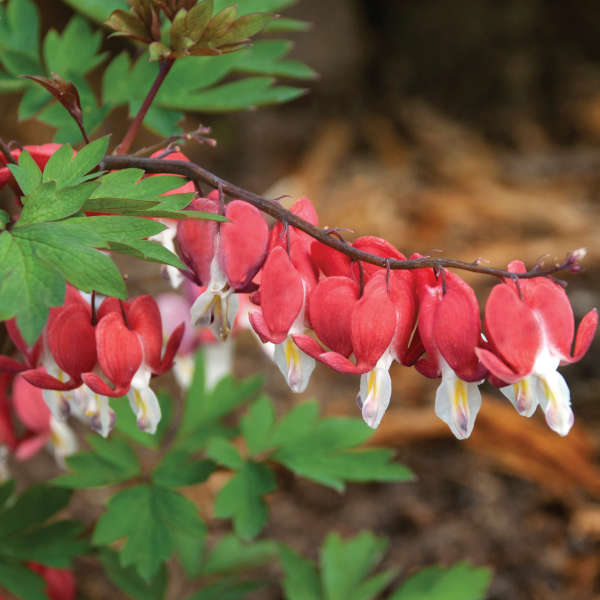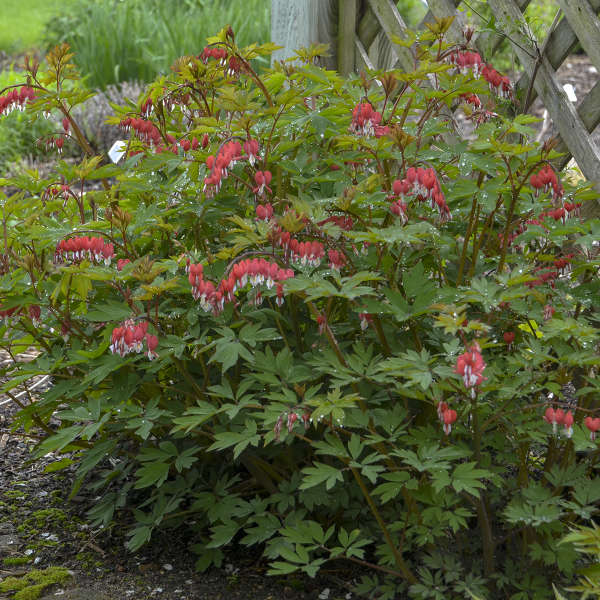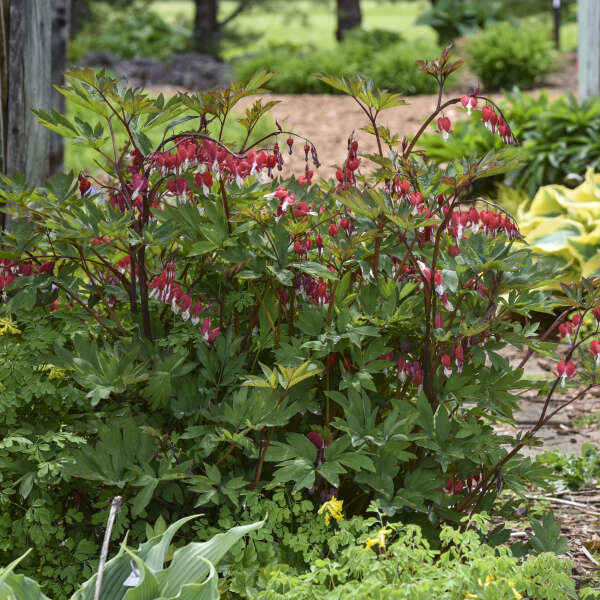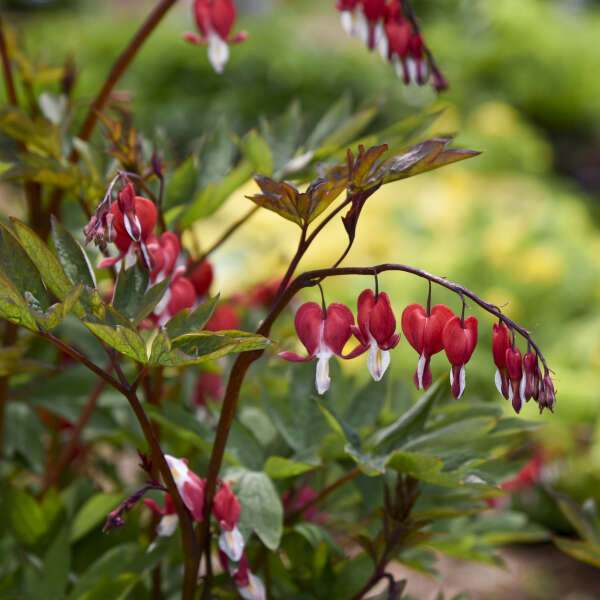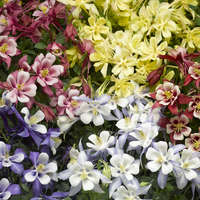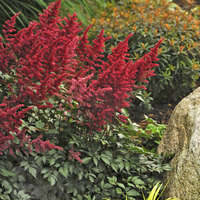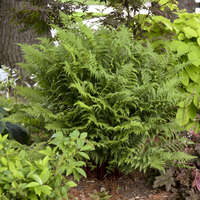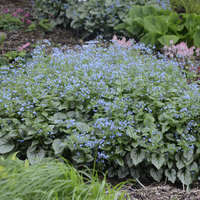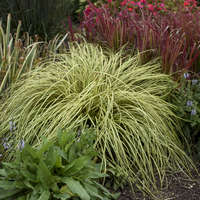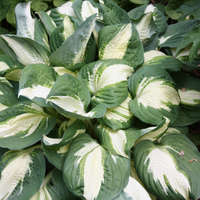Dicentra spectabilis VALENTINE® ('Hordival' PP22739)
Common Name: Old-Fashioned Bleeding Heart, Common Bleeding Heart
A new spin on an old favorite! If you love the classic look of Old Fashioned Bleeding Hearts but are looking for an updated color palette, try this new red flowering selection.
Much like the species, this variety also grows quickly to form a robust clump of deep green foliage topped with arching flower stems in late spring. When the foliage is emerging in spring, it has a tinge of pretty purple color to it.
The flower stems on this variety are deep red and the large, puffy heart-shaped flowers are bright red with a white tip. They dangle romantically from the leafless stems over a period of many weeks. The plant remains attractive after it is finished blooming until it goes summer dormant.
Bleeding Hearts are one of the oldest but still irreplaceable perennials in cultivation. They form large, bushy clumps of powdery-green foliage comprised of cut or lobed leaves on fleshy stems. In late spring, chains of puffy heart-shaped flowers dangle beneath the arching, leafless stems. These racemes make delightful additions to fresh bouquets, lasting about 2 weeks in a vase. In cooler climates with adequate moisture, the bloom time may be extended into early summer.
After putting on this fantastic display, Old-Fashioned Bleeding Hearts usually go dormant until the following spring. However, if plants are kept well-watered during the spring, dormancy may be delayed until late summer or early fall. Other bushy perennials such as Hosta, Geranium, or Sedge should be planted nearby to fill in the resulting gaps.
